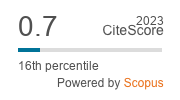Impacts of Window Frames on Building Energy Consumption
doi: 10.14456/mijet.2016.1
Keywords:
window system, window frame, thermal property, building energy consumptionAbstract
In general, only properties of pure glass are used for windows in building energy calculation. However, past researches showed that properties of window frames could alter overall window system properties by 20-30%. Therefore, this study was set up to investigate the significance of window frames on building energy consumption. First, comparisons of properties obtained from the Window 6.3 software of various combinations of window systems were carried out. Six-mm-thick clear glass was treated as the base case. The combinations of window systems were generated from 3 glass types (6-mm clear glass, 6-mm green glass, 6-mm low-E coating glass), 2 frame materials (aluminum, PVC), and 2 frame configurations (fixed frames, sliding frames). After that, each window system was applied to a sample office building to simulate building energy consumption using the EnergyPlus software. The sample building had 4 floors with a total area of 1,295.91 m2 and a window-to-wall ratio (WWR) of 37%. The results showed that properties were most different between the base case and the case of low-E glass with PVC sliding frames. Overall heat transfer coefficient (U), solar heat gain coefficient (SHGC), and visible transmittance (Tvis) were found to be different by 58%, 37%, and 26%, respectively. On the contrary, energy consumption between these two cases differed by only 0.67%. It implies that even with as high as 58% deviation, properties of window systems with frames added have insignificant impacts on energy consumption of the building. In turn, building energy calculation may be done by using only properties of glass with no frames for windows as conventionally done without causing significant errors.








